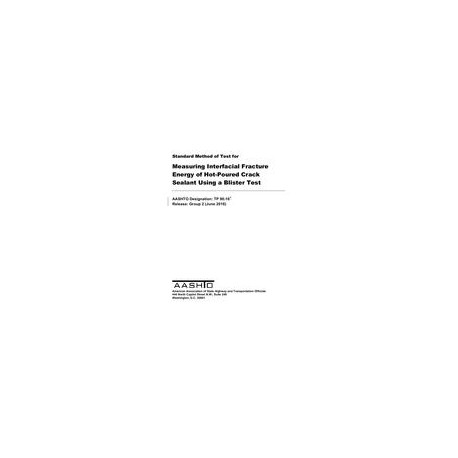Cart 0 Product Products (empty)
No products
To be determined Shipping
$0.00 Total
Product successfully added to your shopping cart
Quantity
Total
There are 0 items in your cart. There is 1 item in your cart.
Total products
Total shipping To be determined
Total
New Reduced price!  View larger
View larger
 View larger
View larger AASHTO TP 90-16
M00001042
New product
AASHTO TP 90-16 Standard Method of Test for Measuring Interfacial Fracture Energy of Hot-Poured Crack Sealant Using a Blister Test
standard by American Association of State and Highway Transportation Officials, 2016
In stock
More info
Full Description
The blister test is used to determine the interfacial fracture energy (IFE) of hot-poured crack sealant at the application temperatures.The blister test is a fracture test. The objective of the test is to apply tensile forces using hydrostatic pressure to delaminate sealant from a substrate. A thin film of sealant is poured on the top of a substrate (usually aluminum) disk that has a hole at the center. Hydrostatic pressure is applied through this hole at a constant flow rate causing delamination between the sealant film and substrate. Sealant deformation and applied hydrostatic pressure are recorded as a function of time. The amount of energy required to achieve complete delamination is called interfacial fracture energy and can be calculated from the pressure-deformation curve. This energy is considered a measure of bonding potential.

